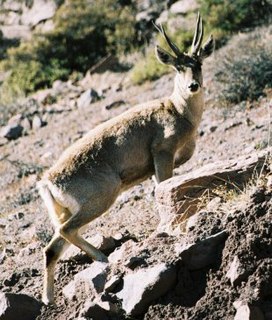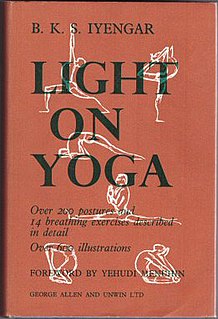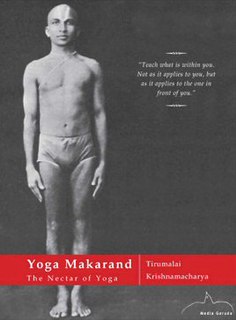This article has multiple issues. Please help improve it or discuss these issues on the talk page . (Learn how and when to remove these template messages) (Learn how and when to remove this template message)
|
This article has multiple issues. Please help improve it or discuss these issues on the talk page . (Learn how and when to remove these template messages) (Learn how and when to remove this template message)
|

An asana is a body posture, originally and still a general term for a sitting meditation pose, and later extended in hatha yoga and modern yoga as exercise, to any type of pose or position, adding reclining, standing, inverted, twisting, and balancing poses. The Yoga Sutras of Patanjali define "asana" as "[a position that] is steady and comfortable". Patanjali mentions the ability to sit for extended periods as one of the eight limbs of his system. Asanas are also called yoga poses or yoga postures in English.

Surya Namaskar, Salute to the Sun or Sun Salutation, is a practice in yoga as exercise incorporating a sequence of some twelve gracefully linked asanas. The asana sequence originated in the Hatha Yoga tradition on 9th century in India. The basic sequence involves moving from a standing position into Downward and Upward Dog poses and then back to the standing position, but many variations are possible. The set of 12 asanas is dedicated to the vedic-hindu solar deity Surya. In some Indian traditions, the positions are each associated with a different mantra.
The Mysore style of asana practice is the way of teaching yoga as exercise within the Ashtanga Vinyasa Yoga tradition as taught by K. Pattabhi Jois in the southern Indian city of Mysore; its fame has made that city a yoga hub with a substantial yoga tourism business.
Salamba Shirshasana, often shortened to Shirshasana, or Yoga Headstand is an inverted asana in modern yoga as exercise; it was described as both an asana and a mudra in classical hatha yoga, under different names.
Tadasana, Mountain Pose or Samasthiti is a standing asana in modern yoga as exercise; it is not described in medieval hatha yoga texts. It is the basis for several other standing asanas.

Shavasana, Corpse Pose, or Mrtasana, is an asana in hatha yoga and modern yoga as exercise, often used for relaxation at the end of a session. It is the usual pose for the practice of yoga nidra meditation.
A vinyasa is a smooth transition between asanas in styles of modern yoga as exercise such as Vinyasa Krama Yoga, Ashtanga Vinyasa Yoga and Bikram Yoga, especially when movement is paired with the breath.
Asana is a general Indian term for a body position, associated with Indian art, dance and the practice of yoga.

Asana is a web and mobile application designed to help teams organize, track, and manage their work. Forrester, Inc. reports that “Asana simplifies team-based work management.”

Mālāsana is a term for various squatting āsanas in hatha yoga and modern yoga as exercise.
Asana Journal is the first and only international Yoga magazine published from India, both in English and Tamil, focusing on modern yoga, naturopathy and wellbeing.

Asana is an archaeological site by the Asana River, a tributary of the Osmore River, in the south-central Andes of southern Peru. The site is situated at an elevation of 3,430 metres (11,250 ft), with land use documented from 3,000–4,800 metres (9,800–15,700 ft). Asana was occupied over the course of 8,000 years; though the inhabitants were initially mobile foragers, long term habitation was marked at a later phase by residential architecture.

Svastikasana is an ancient meditation asana in hatha yoga, sitting cross-legged.

Light on Yoga: Yoga Dipika is a 1966 book on the Iyengar Yoga style of modern yoga as exercise by B. K. S. Iyengar, first published in English. It describes more than 200 yoga postures or asanas, and is illustrated with some 600 monochrome photographs of Iyengar demonstrating these.
Modern yoga consists of a range of techniques including asanas (postures) and meditation derived from some of the philosophies, teachings and practices of the Yoga school, which is one of the six schools of traditional Hindu philosophies, and organised into a wide variety of schools and denominations. It has been described by Elizabeth de Michelis as having four types, namely: Modern Psychosomatic Yoga, as in The Yoga Institute; Modern Denominational Yoga, as in Brahma Kumaris; Modern Postural Yoga, as in Iyengar Yoga; and Modern Meditational Yoga, as in early Transcendental Meditation. The yoga scholar Mark Singleton however does not subscribe to De Michelis's framework, considering the categories to "subsume detail, variation, and exception". In the 21st-century, modern yoga has become the subject of academic study.
The Haṭha Ratnāvalī is a Haṭha yoga text written in the 17th century by Srinivasa. It is one of the first texts to name 84 asanas, earlier texts having claimed as many without naming them. It describes 36 asanas.
The Joga Pradīpikā is a hatha yoga text by Ramanandi Jayatarama written in 1737 in a mixture of Hindi, Braj Bhasa, Khari Boli and forms close to Sanskrit. It presents 6 cleansing methods, 84 asanas, 24 mudras and 8 kumbhakas. The text is illustrated in an 1830 manuscript with 84 paintings of asanas, prepared about a hundred years after the text.

Yoga Makaranda, meaning "Essence of Yoga", is a 1934 book on hatha yoga by the influential pioneer of yoga as exercise, Tirumalai Krishnamacharya. Most of the text is a description of 42 asanas accompanied by 95 photographs of Krishnamacharya and his students executing the poses. There is a brief account of practices other than asanas, which form just one of the eight limbs of classical yoga, that Krishnamacharya "did not instruct his students to practice".

Seetharaman Sundaram was a lawyer and pioneer of modern yoga, often known as Yogacharya Sundaram, and the first person to publish a handbook of yoga asanas in English, his 1928 Yogic Physical Culture. This was also the first yoga book to be illustrated with photographs. He travelled India with the bodybuilder K. V. Iyer, helping to popularise the new blend of hatha yoga and physical culture.
| This article about a geographical location in Fiji is a stub. You can help Wikipedia by expanding it. |